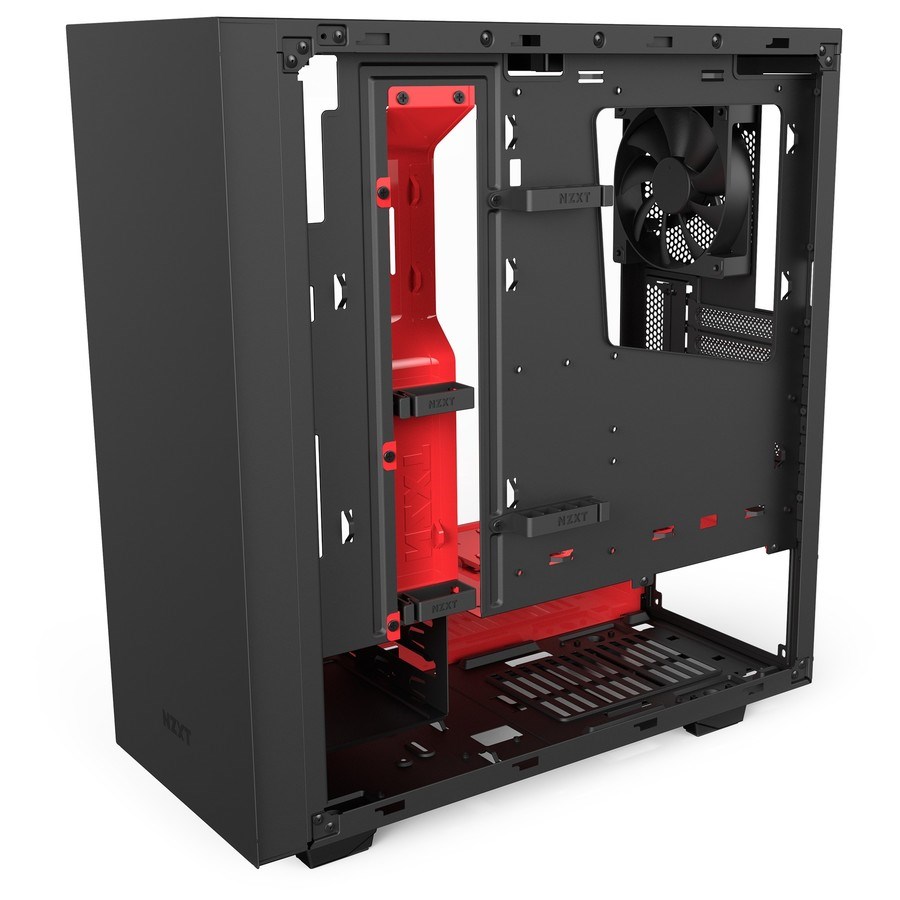
Apparently, those shitty drive rails are still here, and it's as good a reason as any to avoid the case. Furthermore they are unidirectional: unlike drive rails on most other cases in this category, you can't choose which way you want your drive cables to run. On top of that they're flimsy, as noted in the article. Judging from the article, NZXT didn't learn anything: this system seems to follow in those footsteps: it's louder and hotter than the competition for even a medium powered system.Ī bigger problem with the H2, and carried through to this system, was that the drive cages were miserably painful to use: hard to get drives in and hard to get drives out of, with sharp metal edges on the drive plugs that seemed to have a tendency to cut under your fingernails. I must say, it disappointed me enormously.įor starters, the case was significantly starved for air, but I knew that already, and wasn't putting a particularly hot system inside, so I was okay with that. jagerman - Tuesday, link I bought a NZXT H2 case a couple of years ago, which I suppose is the (a?) predecessor to this case, being designed for quiet operation.NZXT targets the H630 for cooling and silencing high-powered components, and while it seems to have had at least some trouble doing that (as have the other competitors), it at least has potential. Noise levels aren't great, but they're actually very competitive, all things considered. I elected to keep airflow clear for the rest of the case as opposed to having cool air directly flow over the hard drives, and a small heat pocket does develop in the top without active air flow. Note that the hard drive thermals are a product of a conscious decision to employ the topmost hard drive cage instead of the bottom. Results aren't great but they're not completely terrible either, and under the circumstances the H630 actually performs pretty admirably. This is for all intents and purposes not a fair fight, but should at least be somewhat educational. Unfortunately I don't have results for any of the silent cases we've tested using our freshly minted "full fat" testbed, so we'll have to see how the H630 fares against the other cases that were tested after we put together that bed. While idle noise remains less than ideal, load noise is surprisingly strong, even performing slightly better than the Deep Silence 1 and 2. Interestingly, the H630's fortunes turn when noise levels are measured.

Thermally it keeps pace with the Deep Silence 1, though Fractal Design's competing Define XL R2 puts in a much stronger showing. Our overclocked testbed's thermals are where the screws start really getting put to the H630. This is one of those places where Nanoxia's Deep Silence 1's chimney turns out to be a killer feature the design of it muffles noise without crippling airflow. The H630 is the loudest "silent" case I've tested under load. Interestingly, though I was of the impression that there wasn't enough ventilation for the H630, I might have been wrong. Unfortunately, fan noise is a real problem for the H630. The queen bee that NZXT has to contend with is the Nanoxia Deep Silence 1 (as well as the Deep Silence 2) while the DS1 doesn't offer exceptional performance in the standings, it has a stellar blend of thermals and acoustics and handles that balancing act very well. The SSD is running toasty, but it has no direct airflow behind the motherboard tray, and it's still well below spec. Unusually, NZXT doesn't include fan control with the H630, instead opting to just try to include quiet fans in the first place.Īmbient temperature was roughly 23C during testing. Our stock testing configuration is in many ways a best case solution (no pun intended) for testing silent cases, as the hardware isn't being pushed too hard and the sound-dampening materials are allowed to do their job. At the same time, though, I was skeptical as to whether or not the ventilation in the front would really be adequate. In the H630, on the other hand, NZXT used a massive 200mm intake fan.

That wasn't true with the NZXT H630, though most silent cases use some combination of 120mm or 140mm fans for the front intake and then a single one in the rear. I've mentioned before that when I go into actually testing a case, I generally have a decent idea of how it's going to perform.


 0 kommentar(er)
0 kommentar(er)
